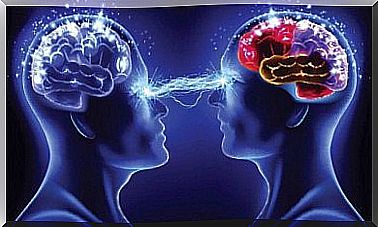How Is The Personality Of An Aggressor Constructed?

Much damage and death is caused by assault. It is therefore important to continue to conduct research on this topic. Thus, understanding how to achieve violence in a relationship – and in other areas – involves knowing how the personality of an aggressor is constructed and what his experience may be in this relationship.
The data shows that being the object or witness of violence does not automatically mean that that witness will be violent in the future. However, studies still tell us that a large proportion of abusers actually have a history of family violence (54%), which justifies psychological intervention.
The personality of an abuser begins in childhood and adolescence
Attachment refers to the way we relate to the world and more particularly to affective figures. From an early age, and in the face of any threat, our attachment system is activated. In other words, in the face of fear, we seek that feeling of security that the company of our reference figures offers us.
On the other hand, if, in the face of the threat, the body maintains an active activation for a long time, it is likely that this energy will eventually turn into aggressiveness. Here, the function of violence is to attract the attention of the reference figure to help us.

It seems that borderline type aggressors and anti-social people have an insecure attachment that characterizes the way they relate, especially with their affective figures. When this type of insecure attachment is combined with exposure to violence and humiliation, a personality disorder develops with violent behavior.
According to Dutton (2003, 2007), the result of this conglomerate is a “diffuse identity”. In these cases, the violence and emotional distancing feed back into a vicious cycle that destroys the relationship.
What is the history of the abusers?
As we know, the experiences with our reference figures are decisive at the level of our personality. According to Dutton (2003), there are different antecedents in relation to the family experiences of the aggressors and the psychological and psychological consequences that result from them:
- Rejection and humiliation: low self-esteem, anger / rage, guilt, lack of emotional regulation… These people tend to be violent and emotionally abusive.
- Insecure attachment: a lot of jealousy and the desire to control everything. The rage becomes more intimate.
- Victim and / or witness of physical abuse: these people remember patterns of violence. They do not have positive strategies for solving problems, show little empathy towards victims of violence… They tend to mistreat others.
- Rejection, humiliation, insecure attachment: violence is concentrated in intimate relationships.
- Rejection, humiliation, insecure attachment, victim and / or witness of physical abuse: the integrity of the person’s ego depends on the relationship. She therefore seeks to control, abuse and pursue others.
The executioner’s fear of being abandoned leads him to a need to control and to do harm. When the aggressor displays aggressive behaviors in addition to attention behaviors, the latter in a way reinforce his closeness to the victim. This results in a type of relationship known as “traumatic link” or “Stockholm syndrome” (Graham et al., 2001; Loue, 2002).
The role of values in violence
The young person with an insecure attachment develops a system of values which justifies his vision of the world and his couple relationships. These values are transmitted through socialization, whether at the level of the family, a group of friends, school, films … Values are not only found in micro-culture, they are also present in general culture. The main values related to gender violence would be as follows:
- Man’s superiority: the myth of Superman, man as a model, tolerance of man’s promiscuity and couple control, the right to demand domestic services from women, etc.
- Ways to understand violence: bad mood provokes violence, men are jealous by nature, breaking things is not a mark of aggression, sometimes there are no other alternatives, man cannot change the relationship if his spouse does not change, etc.
- Conception of women: women are manipulative, they see men as sources of money, feminists hate men, like to be dominated, are as violent as men, etc.

6 explanations given by perpetrators for resorting to domestic violence
According to Holma et al. (2006), the aggressors rely on six recurring justifications to explain their violence. Here they are:
- Violence is natural
- Violence is linked to certain shortcomings of the aggressor in dealing with difficult situations
- The feeling of being cornered.
- The feeling of being annoyed by your partner
- Temporary loss of control
- A justification based on a traumatic past, an accumulation of stress, etc.
It is important to understand that this is not about winning a battle against the abuser. It’s about respecting yourself. Any kind of violence is painful and affects our self-esteem. A large part of working with victims of violence therefore involves accumulating evidence and experiences that strengthen the recovery of confidence and self-esteem. The victim must eventually achieve that feeling of freedom that comes from the feeling of control.










